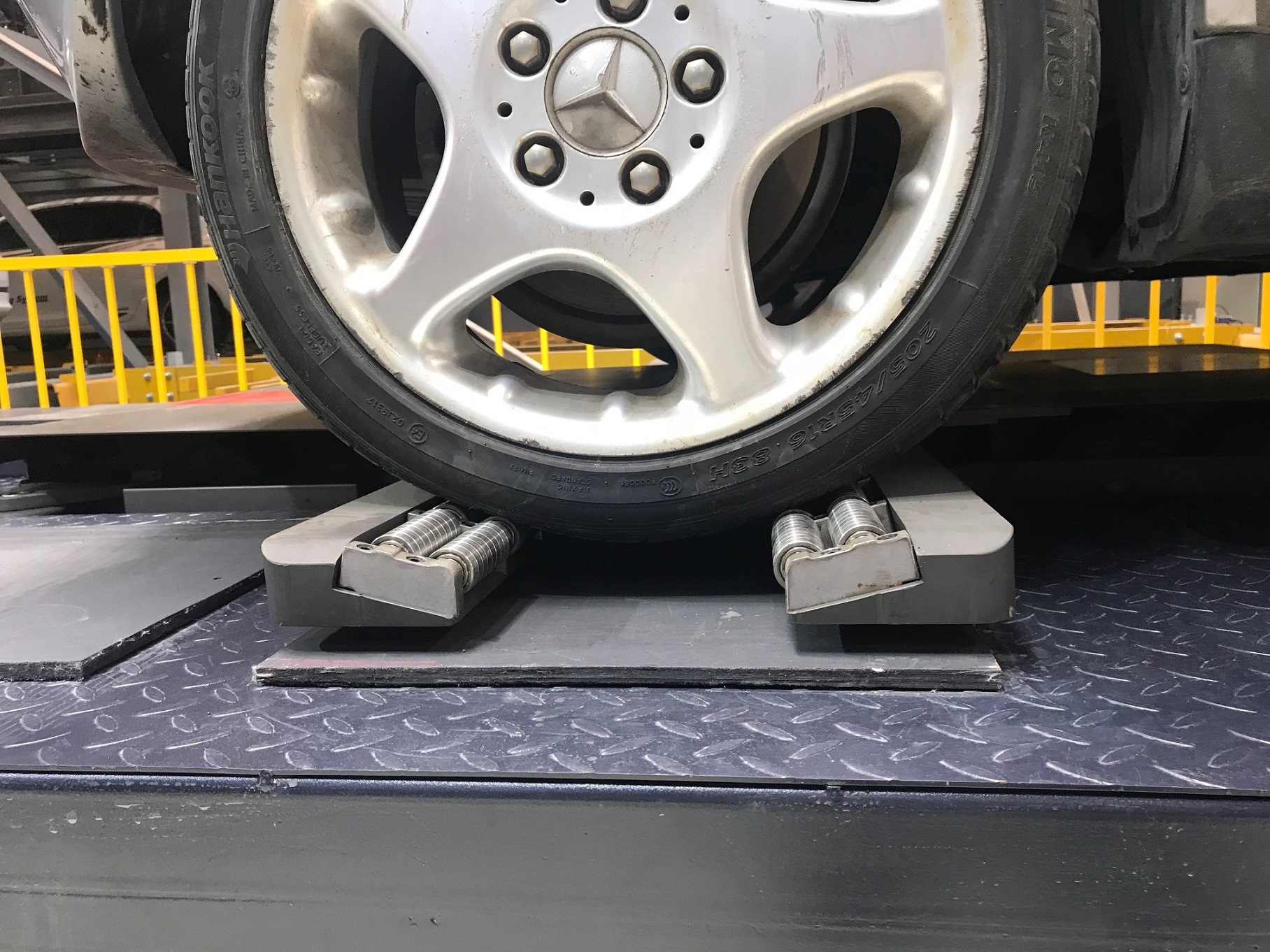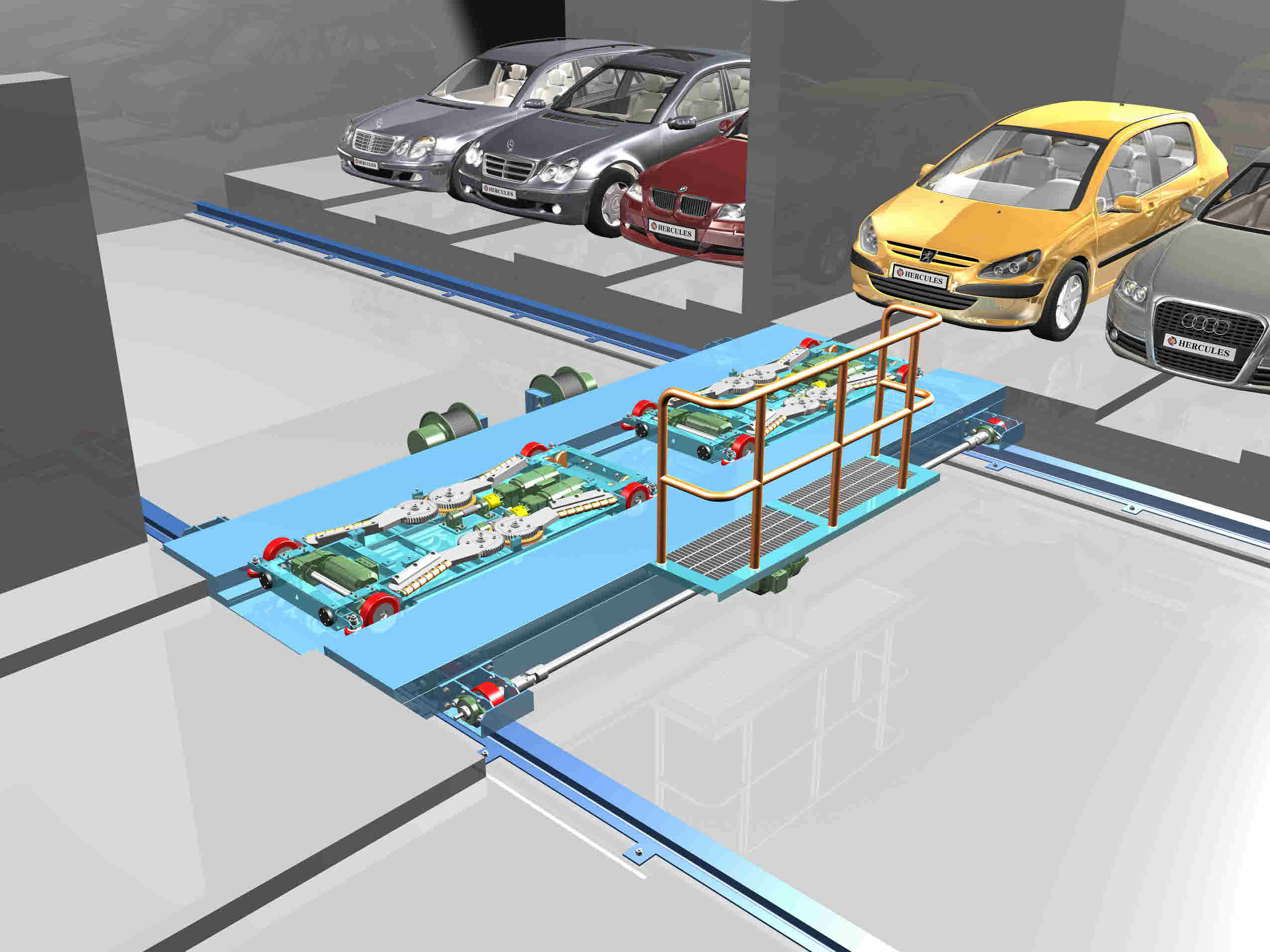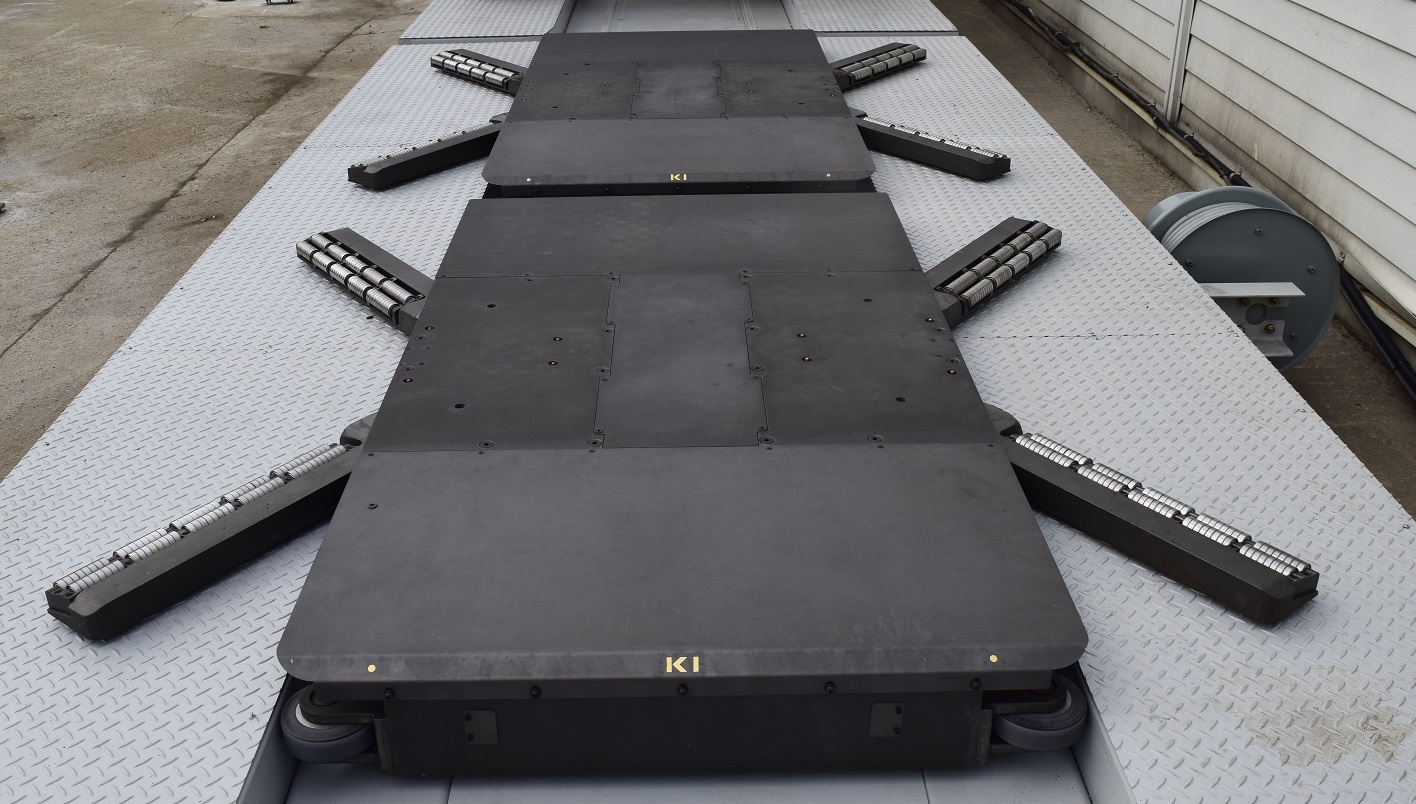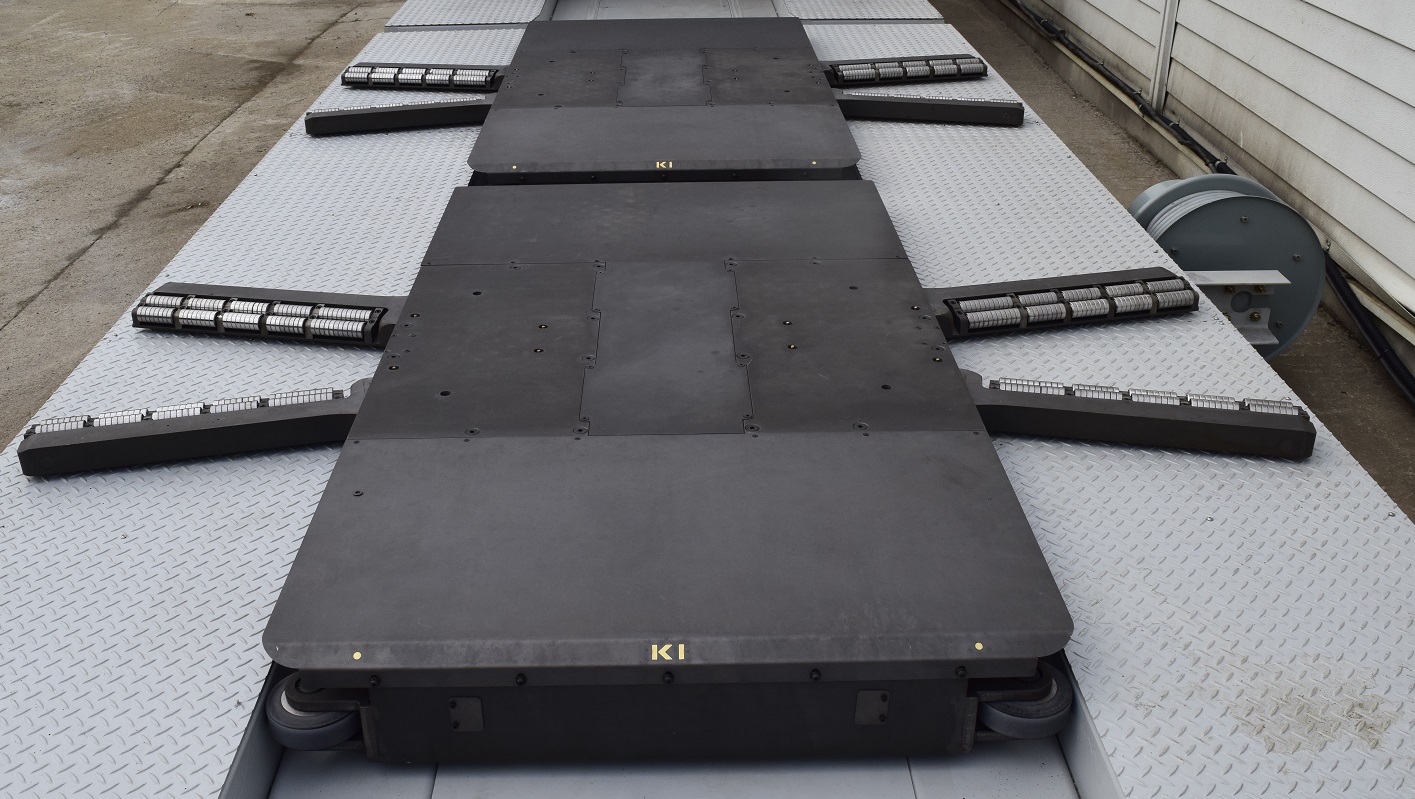In the past, palletised carparking systems were the norm. A number of our competitors still favour this old pallet design.
However, with the rapid advancement of technology in the world of automated carparking, we can now offer our customers palletless systems.
Before we elaborate on the benefits of the palletless systems, let’s firstly touch on the problematic aspects of the palletised option.
With the palletised system, every time you park or retrieve a car, the machine is lifting an additional 700 kg of weight, making it expensive to run electricity wise.
In addition, every time you park a car, the system has to gather up an empty pallet and take it to the entry room for a new, incoming car to park on. The system handles this by way of a double headed transelevator. When it is parking a car in a position where an empty pallet is stored, the double headed machine first picks up the empty pallet and places it below the car on a pallet which it is just about to park.
This all takes time and adds even more weight to be lifted each time a park/retrieve process is carried out i.e. the transelevator now has to lift the weight of the car, plus two pallets, plus all the extra mechanism required to handle two lots of pallets…. Phew! It makes me weary just writing about this old clunky system!


In stark contrast, the benefits of a palletless system are multi-fold.
- A very small amount of electricity is required per movement, given there are no additional pallets to lug around.
- It provides a faster and more efficient handling of cars, for as soon as the system has removed a car from the entry room, the entry room is free for a second car to drive straight in. There is no time wasted by a system which has to place an empty pallet in the entry room for the second car to park on.
- Cars can be parked closer together as there is no pallet!
- The pallets in a palletised system have to be at least 2500mm wide to allow manoeuvring room for an incoming driver. Hence 2500 centre to centre of where the cars are being parked.
- In a palletless system the driver has plenty of room to park. It does not matter what sort of driver they are [as in not parking straight or parking to one side etc], as after the person has left the entry room the system automatically straightens and centres the car before it is picked up by the car picker. Hence being able to achieve 2250 centres where the cars are parked. If people always folded in their mirrors, the cars could be parked at even closer centre to centre dimensions. Very few people actually observe requests to fold their mirrors in, so 2250 centres cater for everyone.
- We use a separate car shuttle on every level which adds to the operational speed. This means cars can be parked and retrieved at the same time which drastically reduces the possibility of cars having to queue. Using separate shuttles on every level which weigh much less than one big transelevator, the running noise and vibration is significantly reduced.
So in summary, the whole palletless system means a faster, quieter, more driver friendly operation, much lower running costs and better parking density.
As a further explanation of the features I’ve highlighted above, the whole system runs by having individual car shuttles on each floor [as opposed to the German mindset of using one device to handle all cars on all levels by using a giant transelevator running on tracks in the aisle].
Using the example of ten parking levels for any given project, this means we would utilise ten vehicle shuttles, so you can effectively be parking/retrieving ten vehicles all at the same time. So again drastically reducing the possibility of queuing of cars, which as we all know is council’s biggest fear with automated parking.
Another advantage of ten smaller shuttles running on rails versus one giant transelevator is the significantly reduced noise levels. A shuttle [the device which handles the cars on each level] weighs about 500 kg, whereas a giant transelevator weighs about 8 tons. The shuttles all run on “whisper wheels” which have a percentage of rubber in them to keep rolling noise and vibration to a minimum. This is not possible on a transelevator which due to the weight must use steel wheels – which naturally produce more noise and vibration.
The numbers reflect the long list of benefits of the palletless system. For example, a proposed palletless system in a tender we were involved with recently required 290 KW. Our system required [and still requires] 54 KW and we park/retrieve at almost three times the speed!


So now to the breakdown question. Firstly, the reasons for minimising the possibility of a breakdown occurring.
- When you have ten vehicle shuttles, the parking and retrieving of all incoming and outgoing cars is spread over these ten shuttles, as opposed to having one giant transelevator [or even two] having to do all of the handling. Therefore there is a significantly reduced load on each shuttle.
- Should one shuttle break down, it only affects the cars on that level. Should a transelevator break down, the whole system is compromised and no cars can come or go. It’s a bit like comparing one big passenger lift in a building which can take 50 people at a time instead of five smaller lifts taking 10 people at a time.
- A palletless system has far fewer movements than a transelevator and pallet system. This is because the transelevator system has the additional task of having to keep supplying new pallets every time a new car arrives and then taking them back and storing them all after people leave. So again the fewer the movements the less the opportunity for something to go wrong.
- Should a breakdown occur we are online with the system, so can remotely shut down a part of the machine so that other components continue to function.
- All of our software is created and supported in Australia. The highly reputable automation company we work with has offices in every state. They manufacture the switch boards here in Australia and support them locally.
Many of our competitors use overseas software companies, where different time zones come into play as well as frequent language issues. - We also have our own fleet of service technicians who are on call 24/7.
We look forward to discussing your parking requirements.


